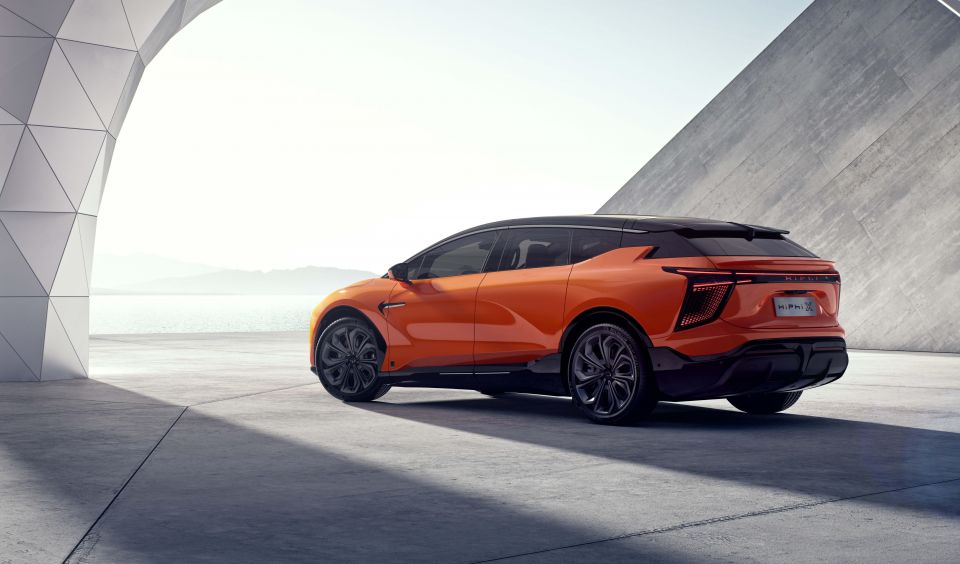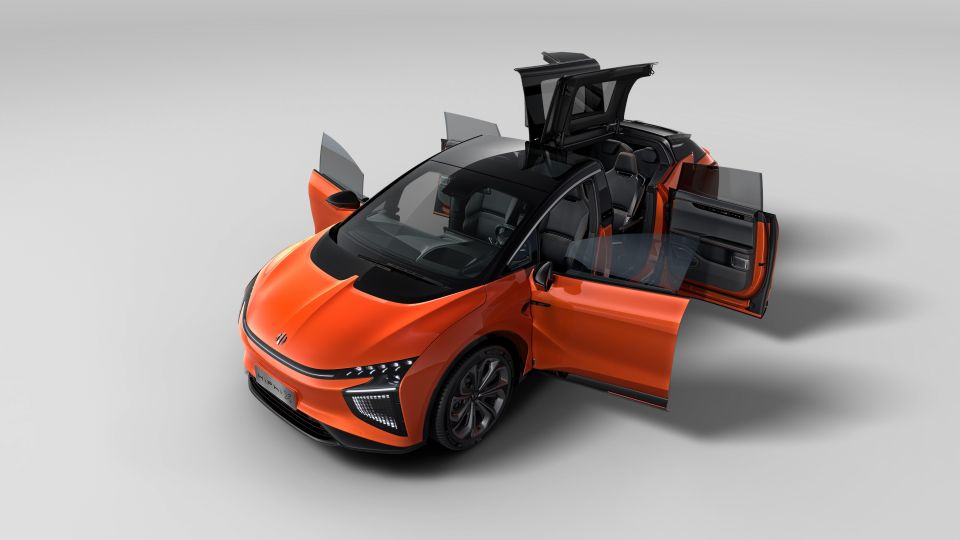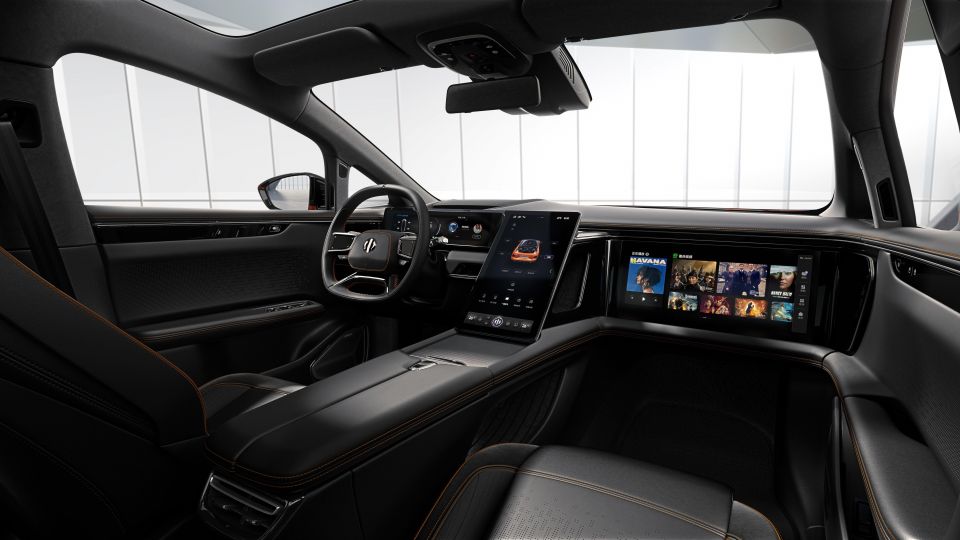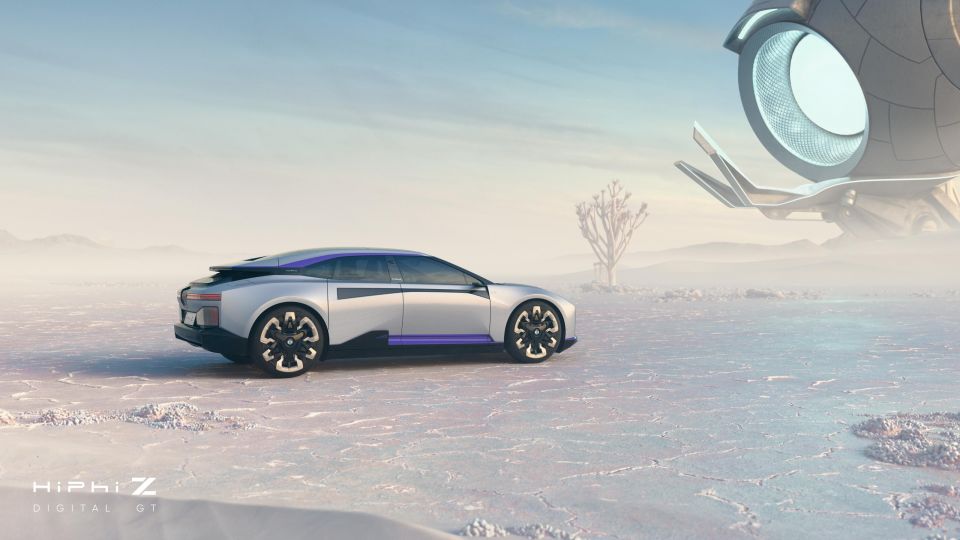

Andrew Maclean
Honda CR-V RS e:HEV vs Toyota RAV4 Edge Hybrid: Spec battle
5 Days Ago
The HiPhi X is the most expensive EV on sale in China from a domestic carmaker. This is one brand in a hurry.

Contributor


Contributor
China is arguably the tech world’s factory, manufacturing semiconductors to lithium-ion batteries for everything from smartphones, laptops and other handheld devices – to vehicles.
Manufacturing excellence has fed into greater support for homegrown research and development, allowing the country to hold patents and dominate markets such as LFP battery production, as currently used in the entry-level Tesla Model 3.
All of this has created an unrivalled ecosystem of talent that makes China a fertile environment for businesses looking to focus on using the latest technology and then quickly ramp up production. Human Horizons is one of these.

Human Horizons was founded in 2017 by automotive industry veteran and former politician Ding Lei.
Lei commenced his career at fellow Chinese carmaker SAIC (Shanghai Automotive Industry Corporation), owner of the MG and LDV brands sold in Australia.
As typical of Chinese policy requiring foreign carmakers to partner and share expertise with domestic firms if they wanted to build and sell their models there, Lei worked at SAIC’s joint ventures with Volkswagen (Shanghai Volkswagen) and General Motors (Shanghai General Motors), presiding over the launch of more than 20 new models for the latter.

He subsequently took a short break from the automotive space to act as Deputy Mayor of the Shanghai Pudong New District, before acting as Chairman of Human Horizons.
Human Horizons bills itself as a new mobility and intelligent research company that claims to redefine human mobility by building smart transportation technologies and contributing to the development of smart cities.
Headquartered in Shanghai, the company launched its ‘HiPhi’ (pronounced Hi-Fi) brand of ‘premium smart all-electric’ vehicles in 2019.

Apart from its Shanghai offices, the brand has a manufacturing facility in the Chinese city of Yancheng, and an office in Tokyo that is focused around the design of concepts and undertaking research and development, including into new materials.
Human Horizons plans to expand its international footprint further offices in the United States and Europe that focus on the development of technologies such as advanced driver assistance systems (ADAS).
The HiPhi brand is expanding rapidly. The company claims to have sold 4237 vehicles in 2021, and to have 37 ‘experience shops’ across the country.
Perhaps the greatest competitor to Human Horizons is fellow Chinese startup Nio, which has an arguably more mature product range. Other rivals include established Chinese carmakers such as Geely, BYD, Great Wall and Lei’s former employer, SAIC Motor.

Human Horizons sells cars under the HiPhi brand, and this currently consists of just one model, the HiPhi X large SUV.
Developed under the philosophy of ‘design defined by scenarios, vehicle defined by software, and value defined by co-creation’, Human Horizons ambitiously claims the car defines a new category of ‘TechLuxe’ vehicles, designed as part of a continuous feedback cycle with users.
Practically, this translates to the HiPhi X, in initial Founder’s Edition trim, being the most expensive EV available for sale in China from a domestic (Chinese) carmaker, priced at the equivalent of $175,000.

For this large sum of money, the HiPhi X offers a range of 550km on the very optimistic NEDC cycle, from a 97kWh battery.
Size-wise, Human Horizons has positioned this car in a similar class to full-size luxury SUVs such as the BMW X7 or Mercedes-Benz GLS SUV, with a length of 5.2m, weight of 2500kg, and both six- and more luxurious four-seat options available. HiPhi claims an acceleration from 0-96 km/h (0-60 mph) of 3.9 seconds.
In line with the overall brand focus, the most attractive selling points of the HiPhi X are its striking design and technology. To ensure ease of access despite its low slung proportions, the X makes use of Rolls-Royce style coach doors.

At the rear of the car, these doors are paired with a small set of upwards-opening Tesla Model X aping ‘butterfly doors’ to help prevent occupants bumping their head into the top of the door frame during entry/exit.
The vehicle also includes numerous technical innovations to justify its price tag.
Most interestingly, the car’s headlight and taillight clusters pack a total of 1700 LEDs, which can be programmed (whilst the vehicle is stationary) to display graphics such as hearts, smiley faces and a countless range of other symbols or messages.

The doors do not use conventional handles, and instead the car makes use of a facial recognition system or touch sensors to let passengers in. To shorten the turning circle, the car also makes use of an S-Class style rear-wheel steering system.
Technology on the inside also takes a step up. The dashboard uses three separate displays, with a portrait oriented infotainment screen bisecting the digital instrument binnacle, as well as a separate, mammoth 19-inch screen exclusively for use by the front passenger.
The driver also benefits from a large, augmented reality heads-up display and the full suite of driver-assist systems such as adaptive cruise control and automatic parking.

Human Horizons has not yet announced any plans to sell the HiPhi X internationally, and it remains very unlikely that Australians will get a chance to see this particular model on local roads in the near future. The company is likely to remain focused on scaling up domestic Chinese sales in the short term.
Apart from the HiPhi X, Human Horizons has recently revealed its futuristic HiPhi Z concept car. This is claimed to be a ‘digital GT’ five-door shooting brake based on the same underpinnings as the HiPhi X.
A reveal of the production version is expected in April 2022 at the Beijing International Automotive Exhibition, with Human Horizons claiming that large scale production will commence before the end of the year.


Andrew Maclean
5 Days Ago


Shane O'Donoghue
5 Days Ago


Anthony Crawford
4 Days Ago


Matt Campbell
3 Days Ago


James Wong
2 Days Ago


Max Davies
12 Hours Ago